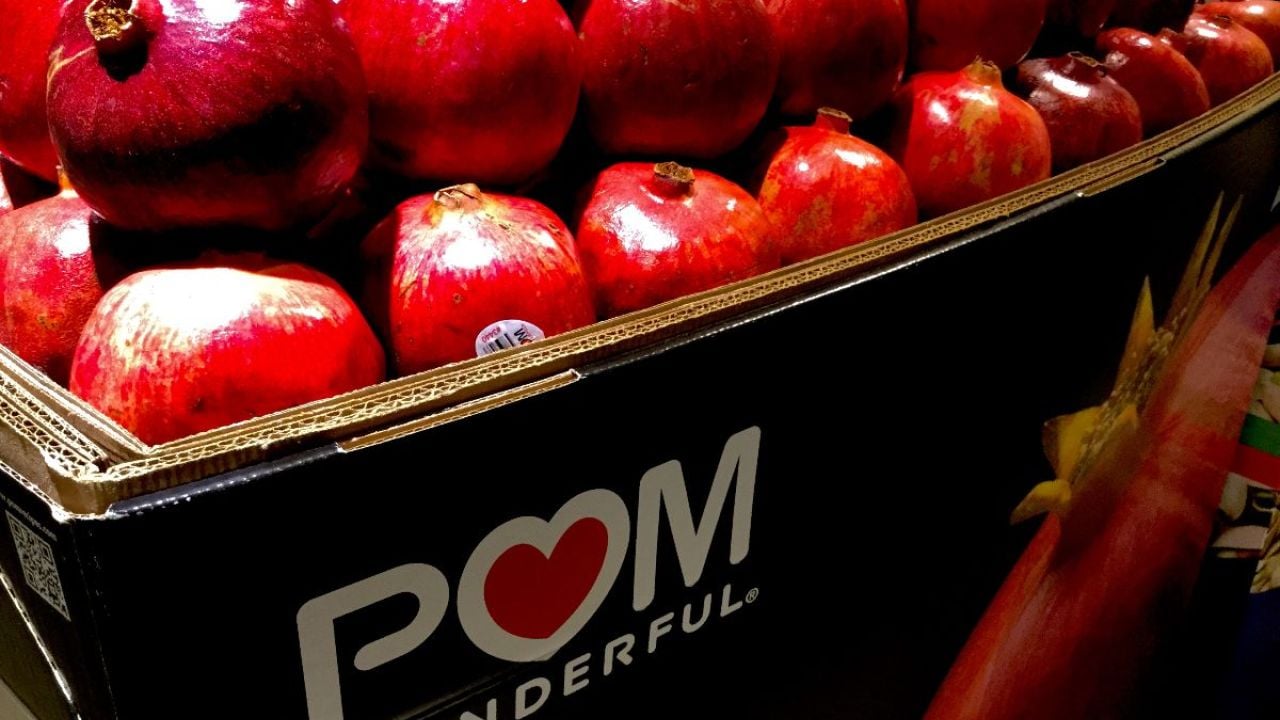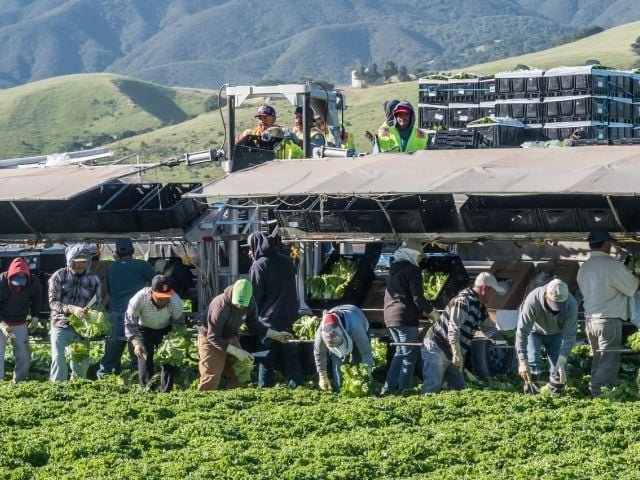
The Wonderful Company, based in California, touts its “iconic, healthy” popular pomegranate juice and other products. But it’s also the state’s second-largest user of paraquat – a toxic weedkiller linked to increased risk of Parkinson’s disease and other harms.
In 2021 alone, Wonderful sprayed more than 56,000 pounds of paraquat on fields in the Golden State used to produce pistachios, almonds and pomegranates, according to state and county pesticide records obtained by EWG.
Only the J.G. Boswell Company, a major crop grower, used more paraquat in California that year, according to EWG’s analysis of the pesticide records. Boswell used more than 58,000 pounds of paraquat on cotton, tomatoes and other crops.
Together the two companies sprayed 27 percent of all the paraquat used in California, records show.
Other major users of paraquat in California include Trinitas Farming, Hansen Ranches, South Valley Farms and Gilkey Farms. (See Table.) But records show the use of paraquat by these almond and cotton producers was a small fraction of the amount used by Boswell and Wonderful.
The 10 largest paraquat users in California in 2021 represented 40 percent of all use of the chemical in the state. Their use contributed to health risks for farmworkers and other people living and working near where the chemical was applied.
10 largest paraquat users in California in 2021 (in descending order of pounds used)
| Rank | Grower | Pounds applied | Percent of total use in state |
|---|---|---|---|
| 1 | J.G. Boswell | 58,279 | 13.7 |
| 2 | Wonderful | 56,753 | 13.3 |
| 3 | Trinitas Farming | 11,393 | 2.7 |
| 4 | Hansen Ranches | 10,518 | 2.5 |
| 5 | South Valley Farms/Farmland Reserve | 7,264 | 1.7 |
| 6 | Sandridge Farms | 5,913 | 1.4 |
| 7 | Gilkey Farms | 5,868 | 1.4 |
| 8 | Braden Farms | 5,803 | 1.4 |
| 9 | Bagdasarian Farms | 5,264 | 1.2 |
| 10 | James Paiva | 5,159 | 1.2 |
Source: Environmental Working Group from 2021 California pesticide use reporting data requested from county commissioners (see methodology)
In the U.S., farmers mostly use paraquat into clear fields before planting almonds, corn, peanuts, soybeans, wine grapes and other crops. Much of the chemical is picked up by the soil and remains there for years. But it can also linger in dust or drift through the air to nearby communities.
The Environmental Protection Agency says paraquat is too toxic to use on golf courses, but it allows spraying of the herbicide on crop fields like the ones in California.
Because the chemical can drift, it’s not just those working with it directly who are exposed to its dangers. In addition to its association with Parkinson’s disease, the chemical has also been linked to other risks, including non-Hodgkin lymphoma and childhood leukemia.
That’s what makes Wonderful’s heavy use of paraquat so surprising, particularly as the company claims to employ “bio-rational pest control that uses naturally occurring compounds rather than dangerous chemicals” in its products. Well-known Wonderful brands include Pom pomegranate juice, Landmark Vineyards wine and Fiji Water, among others.
More than 60 countries have banned the use of paraquat because of concerns about the serious health harms linked to exposure. Yet Wonderful claims the company’s pomegranates are “held to some of the highest agricultural standards in the world.”
Health risks for Californians
It’s hard to know the full scope of paraquat use across the U.S. California is the only state where information about the location and amount of paraquat used is readily available.
Overall, 5.3 million pounds of paraquat were sprayed in California between 2017 and 2021, but most of it was sprayed in 10 counties. Just five of those counties – Kern, Kings, Fresno, Tulare and Merced – represent 66 percent of all paraquat use in the state.
Chronic exposure to paraquat increases the risk of developing Parkinson’s disease by reducing the number of neurons that produce dopamine in certain parts of the brain.
A UCLA study from 2024 found that in California, paraquat exposure at work or at home is associated with Parkinson’s disease. The researchers found that paraquat sprayed within 500 meters, or about 1,640 feet, of where people lived and worked could more than double a person’s odds of developing Parkinson’s.
A study using data from the National Institutes of Health found workers who sprayed paraquat were more than twice as likely to develop Parkinson’s disease as those who applied other pesticides. A meta-analysis of 13 studies found a 64 percent increase in the likelihood of developing Parkinson’s disease from paraquat exposure.
Researchers have used paraquat exposure in animals to study Parkinson’s disease.
Threat to Latino communities
Latinos in some California communities experiencing the worst poverty are exposed to far higher amounts of paraquat than people in other areas, a separate recent analysis finds.
In Kern County – a hot spot of paraquat use – the combined population of two communities, Shafter and Wasko, is almost 50,000. Both communities experience poverty – one in five residents lives below the poverty line.
Both communities are predominantly Latino, making up more than 80 percent of the population.
Total paraquat spraying in the two communities between 2017 and 2021 was almost 180,000 pounds.
Paraquat was also used in large amounts in three other Latino communities with high poverty rates – Corcoran, Delano and McFarland.
Seventy percent of the sections where paraquat was sprayed were in census tracts where the proportion of residents who were Latino was greater than the state-wide average. Almost 80 percent of paraquat used in California was sprayed in these sections.
The EPA ignores the evidence
The manufacturer of paraquat has for decades hidden its knowledge of the chemical’s health risks. But the EPA has dismissed research linking paraquat to Parkinson’s disease, including in its latest analysis of the chemical, released last month.The agency has also failed to consider evidence published by the nonprofit investigative news site The New Lede, which revealed that paraquat’s manufacturer actively sought to mislead EPA regulators about a link between paraquat and Parkinson’s.
And the EPA also ignores the risk of exposure for people working living on or near farms.The agency assumes people who spray paraquat will follow instructions designed to reduce drift and harm. But studies show “off label” use of pesticides is common, with virtually no enforcement.
To protect farmworkers and others fully, the EPA must follow the science and ban the use of paraquat. But states shouldn’t wait for the agency to act. Federal pesticide law sets a floor, not a ceiling. To protect their residents and public health, state and local governments have the power to enact measures such as a ban on paraquat.






